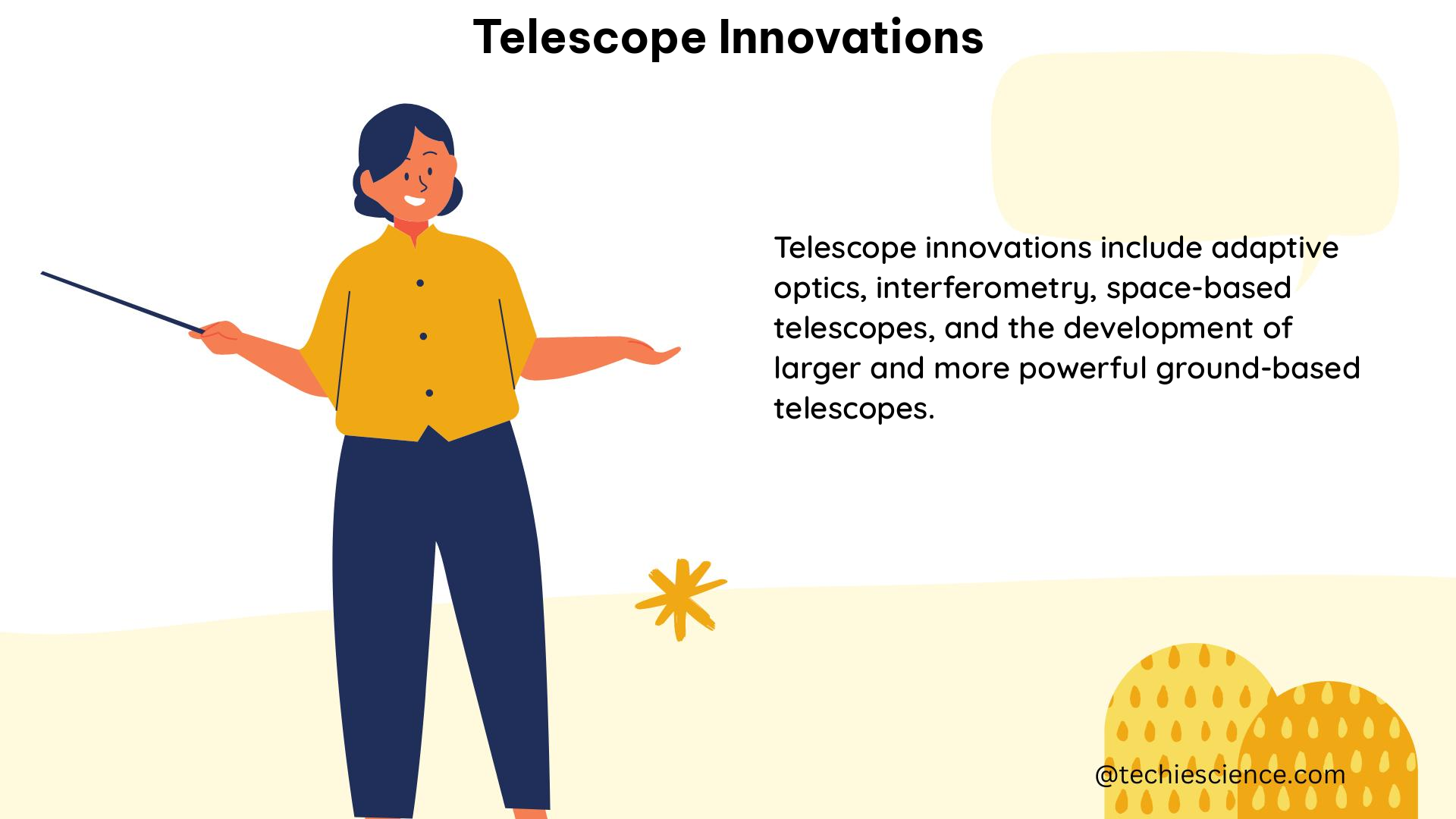Telescope innovations have revolutionized various fields, from space exploration to medical advancements. These cutting-edge technologies have pushed the boundaries of what was once thought possible, enabling groundbreaking discoveries and transforming our understanding of the universe. In this comprehensive guide, we will delve into the intricate details of these remarkable innovations, equipping physics students with a deep understanding of the principles and applications that drive these advancements.
The James Webb Space Telescope (JWST): Unveiling the Secrets of the Cosmos
The James Webb Space Telescope (JWST) is a marvel of engineering, designed to explore the earliest galaxies in the universe and unravel the mysteries of our cosmic origins. Its primary mirror, measuring more than two stories in diameter, is composed of 18 separate segments, each of which must be perfectly smooth, flat, and scratch-free to deliver a view 13 billion light-years away.
To achieve this level of precision, the JWST team employed a revolutionary technique called the Infrared Scanning Shack Hartmann System. This technology enabled the immediate testing of the mirror’s surface after grinding, eliminating one of the polishing steps and significantly reducing the time required to construct the high-quality primary mirror segments.
The JWST’s advanced optics and instrumentation have also found applications in other fields, such as eye surgery. The WaveFront Sciences’ Complete Ophthalmic Analysis System (COAS), which incorporates algorithms developed for the JWST, has been able to perform 21 times faster, supporting groundbreaking research in areas like cataracts, keratoconus, and eye movement.
Telescope Innovations in Process Chemistry: Unlocking Efficiency and Productivity

Telescope innovations have also made significant strides in the field of process chemistry, where they have been instrumental in breaking down barriers and yielding greater efficiency, higher productivity, and more impactful discoveries.
Telescope Innovations’ core technology platforms leverage advanced optical and sensor technologies to provide unprecedented insights into chemical processes. These platforms employ a combination of techniques, including:
-
Raman Spectroscopy: This technique uses the inelastic scattering of monochromatic light, typically from a laser, to identify and quantify the chemical composition of a sample. By analyzing the Raman shift, researchers can gain valuable information about the molecular structure and interactions within a chemical system.
-
Fourier Transform Infrared (FTIR) Spectroscopy: FTIR spectroscopy is a powerful tool for identifying and quantifying the chemical components in a sample. It works by measuring the absorption or transmission of infrared radiation, which is characteristic of the molecular vibrations within the sample.
-
Ultraviolet-Visible (UV-Vis) Spectroscopy: UV-Vis spectroscopy measures the absorption or reflection of light in the ultraviolet and visible regions of the electromagnetic spectrum. This technique is particularly useful for analyzing the electronic transitions within molecules, providing insights into their structure and reactivity.
By integrating these advanced spectroscopic techniques, Telescope Innovations’ platforms enable researchers to gain a deeper understanding of chemical processes, reducing the number of experiments required and increasing the overall productivity and efficiency of their research.
Quantifiable Data and Measurable Impacts
The impact of telescope innovations can be seen in the impressive financial performance of Telescope Innovations. In the first fiscal quarter of 2024, the company generated revenues of $1.50 million, with a net income of $215,000, exceeding its prior records.
These financial results are a testament to the company’s ability to deliver cutting-edge solutions that address the needs of various industries, from space exploration to process chemistry. The incorporation of advanced optical and sensor technologies, coupled with the development of innovative algorithms, has enabled Telescope Innovations to provide its clients with unparalleled insights and efficiency.
Conclusion
Telescope innovations have undoubtedly transformed the landscape of scientific research and exploration. From the groundbreaking advancements in the James Webb Space Telescope to the revolutionary impact on process chemistry, these technologies have pushed the boundaries of what is possible.
As physics students, it is crucial to understand the underlying principles and applications of these innovations, as they will undoubtedly shape the future of scientific discovery and technological progress. By delving into the technical details and quantifiable data presented in this guide, you will be equipped with the knowledge and tools necessary to contribute to the ongoing evolution of telescope technologies and their far-reaching impact on the world around us.
References
- NASA Spinoff. (2012). Meticulous Measurements Enable Groundbreaking Discoveries. Retrieved from https://spinoff.nasa.gov/Spinoff2012/hm_5.html
- Telescope Innovations. (2024). Telescope Innovations Presents Results of First Fiscal Quarter 2024. Retrieved from https://telescopeinnovations.com/telescope-innovations-presents-results-of-first-fiscal-quarter-2024/
- NASA Spinoff. (n.d.). Making the Most of Meticulous Measurements. Retrieved from https://spinoff.nasa.gov/Making_the_Most_of_Meticulous_Measurements
- FBK Magazine. (n.d.). Misura ciò che è misurabile e rendi misurabile ciò che non lo è: i sensori come trasduttori dell’ambiente. Retrieved from https://magazine.fbk.eu/en/news/misura-cio-che-e-misurabile-e-rendi-misurabile-cio-che-non-lo-e-i-sensori-come-trasduttori-dellambiente/

The lambdageeks.com Core SME Team is a group of experienced subject matter experts from diverse scientific and technical fields including Physics, Chemistry, Technology,Electronics & Electrical Engineering, Automotive, Mechanical Engineering. Our team collaborates to create high-quality, well-researched articles on a wide range of science and technology topics for the lambdageeks.com website.
All Our Senior SME are having more than 7 Years of experience in the respective fields . They are either Working Industry Professionals or assocaited With different Universities. Refer Our Authors Page to get to know About our Core SMEs.